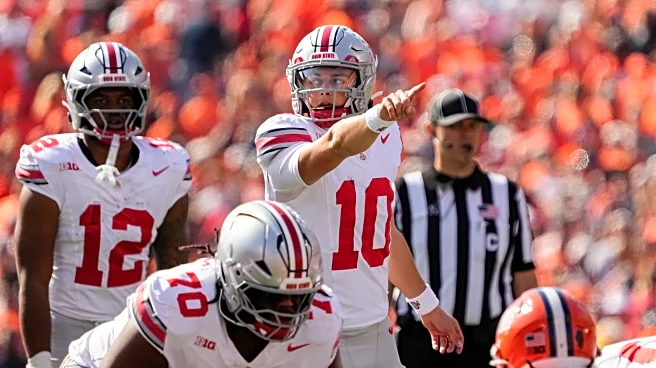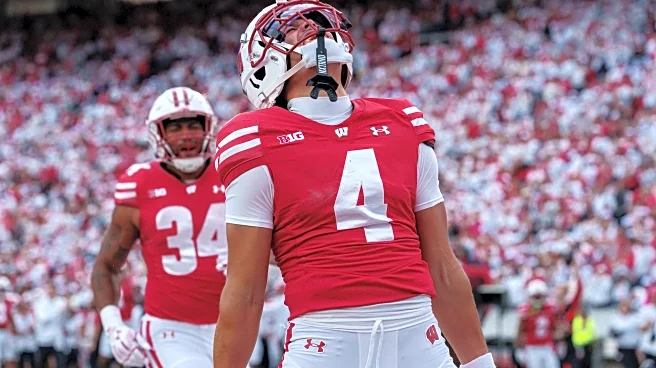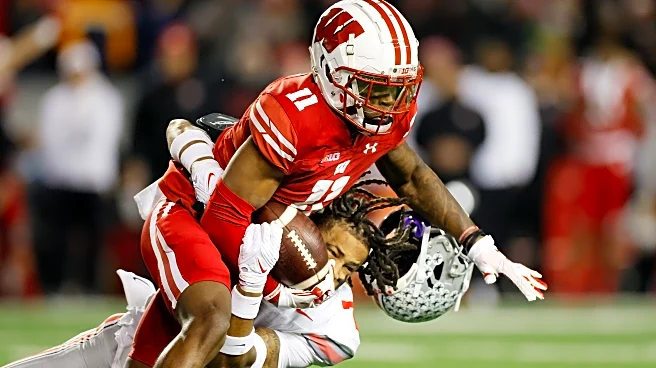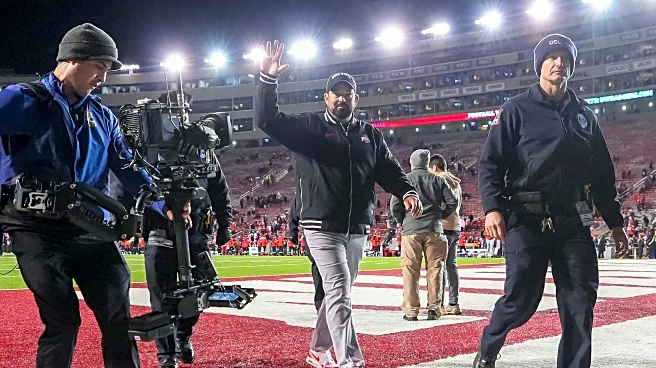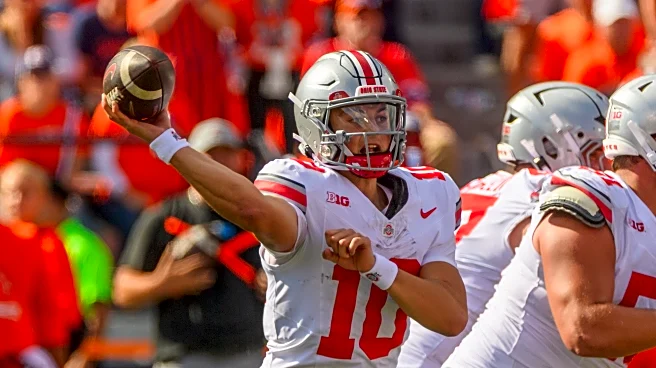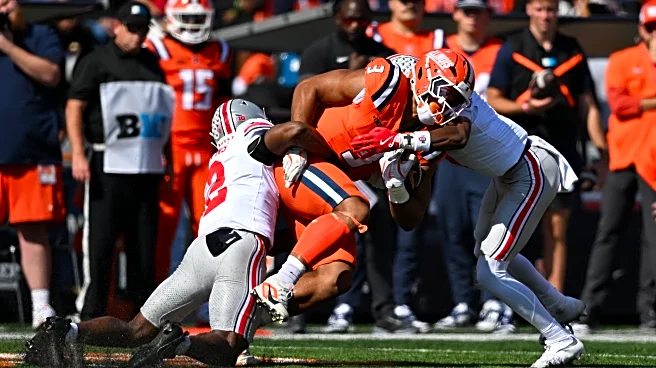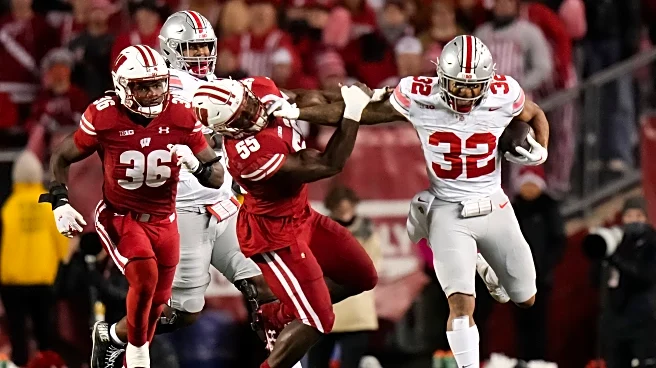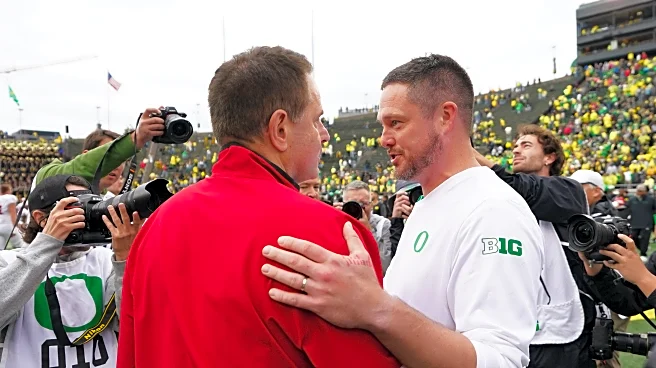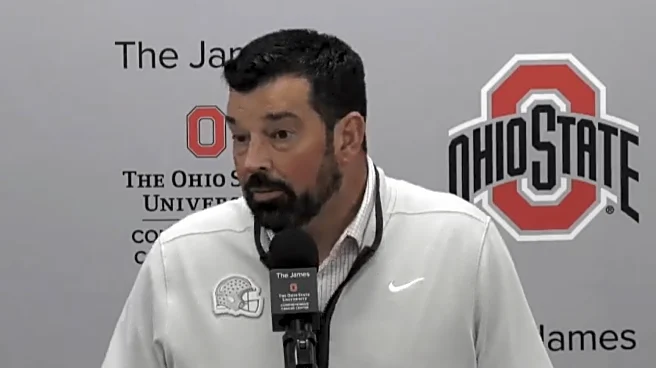Ohio State’s identity this season has been built on two clear pillars: An elite defense that forces opponents into long, ugly drives, and an offense that, when it clicks, moves the ball with surgical efficiency.
Those strengths showed again in a 34–16 road win at Illinois on Oct. 11. Still, a recurring theme that has dogged the Buckeyes all year also reappeared in Champaign — red-zone friction.
If Ohio State wants to be truly unstoppable down the stretch, the staff must fix how the team finishes drives inside the opponent’s 20-yard line.
Defensive consistency vs. offensive friction
The data and the tape tell two different but complementary stories.
On defense, Matt Patricia’s group had been nearly flawless in the red zone for most of the fall. Through the first five games the Buckeyes had allowed no red-zone touchdowns, turning opponents’ red-zone trips into field goals or forced turnovers and shrinking opponents’ scoring upside.
That defensive stinginess, pressure, coverage discipline and assignment soundness is real and a foundational advantage for Ohio State. It’s why the Buckeyes continue to win games even when the offense grinds.
Offensively, the surface numbers can look encouraging. Ohio State’s red-zone scoring rate sits in a somewhat above-average range and season-to-date figures show the offense converting a high percentage of trips into scores.
Yet the nuance matters. The Buckeyes have repeatedly stalled in short yardage or defaulted to conservative looks in goal-to-goal situations against the good teams they have played.
In Champaign, that manifested as a handful of drives where the offense could have put the game away earlier if it had just executed cleaner in tight spaces.
Why it matters, and what’s going wrong
Championship teams don’t just move the ball; They finish possessions.
Red-zone efficiency swings games in two ways: it raises your expected points per trip, and it shortens the leash on your defense by reducing opponent possessions. When Ohio State converts inside the 20, opponents must play with urgency. When it doesn’t, tight games remain tight and variance, a blocked kick, a turnover, a penalty, can flip a result.
Film study shows a few repeatable issues that explain the stops.
First — personnel alignment and playcall conservatism. On several goal-line snaps this season the Buckeyes leaned into plays that sacrificed leverage for perceived safety, inside runs into stacked fronts or short routes that invited defenders to crowd the box.
Second — execution, missed blocks, a false start here, a drop there has been more frequent in tight spaces than you’d expect from a team with Ohio State’s veteran talent.
Third — situational playcalling on obvious short yardage has sometimes prioritized a high-percentage option that fails to create separation. That predictability makes red-zone defense simpler.
The path forward
So what can Ryan Day, Brian Hartline and the staff realistically do?
There are three practical, high-impact adjustments in my opinion:
- Expand the goal-line toolbox without abandoning physicality: Ohio State benefits when it is unpredictable in short spaces. Play-action boots, RPO reads, and quick pop passes take advantage of linebackers cheating down.
- Tighten fundamentals on interior blocking and timing: Many of the stalls are micro-errors — a reach block not set, a delayed chip, a running back hesitating. Special emphasis in practice on faster tempo, more physical contact, and situational red-zone drills can help eliminate those.
- Make the quarterback the decider in the box: Julian Sayin’s development gives the Buckeyes a dynamic decision-maker. His quick reads, accurate short throws, and composure under pressure are ideal for tight windows near the goal line. Maybe we could even see Lincoln Kienholz in some packages in the red zone to take advantage of his legs.
Some of these solutions are already visible in practice and personnel choices. The staff has been experimenting with more three and even four tight end sets, and the running game led by Bo Jackson and CJ Donaldson has improved its burst and patience in recent weeks.
However, the timing of fixes is critical. The next two weeks include winnable but consequential matchups where Ohio State cannot afford to be sloppy in short-field situations.
Bottom line
Ohio State remains an elite team with a top-tier defense and a high-ceiling offense.
The red-zone issues are fixable; The sort of practice-field problems championship programs love to correct. If the Buckeyes can tighten execution, diversify short-yardage playcalling, and let Sayin’s instincts be the tiebreaker, they’ll turn close games into decisive ones.
Otherwise, late-season pressure could compound small inefficiencies into outcomes that matter.
